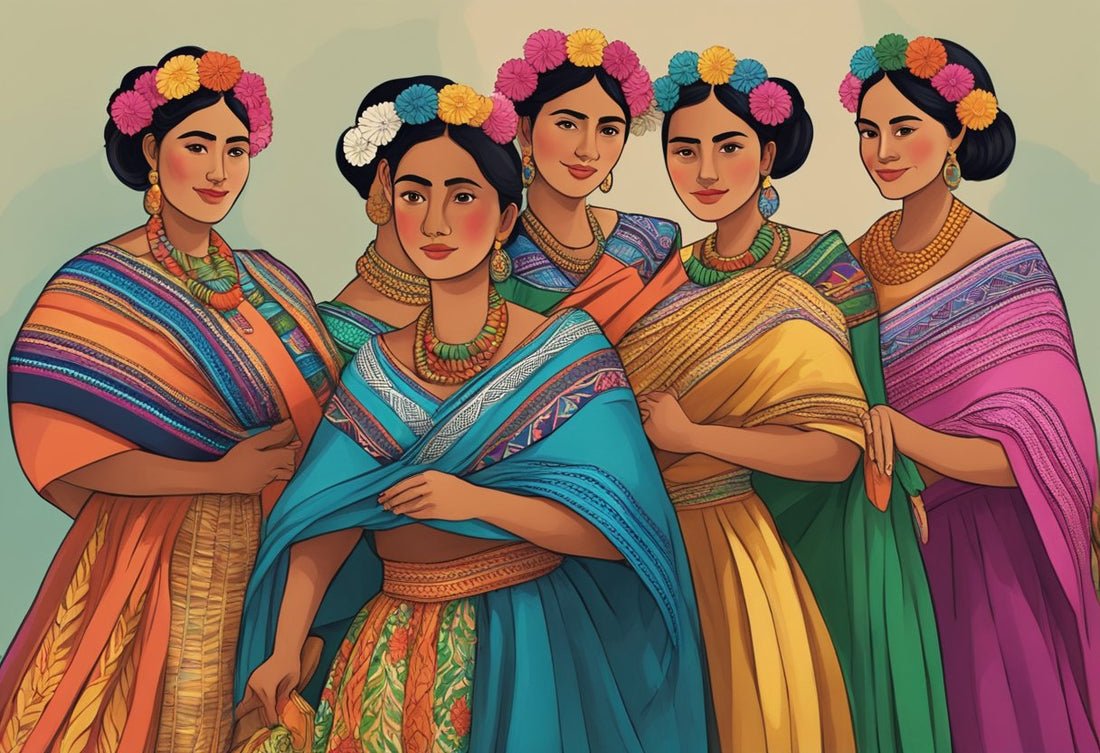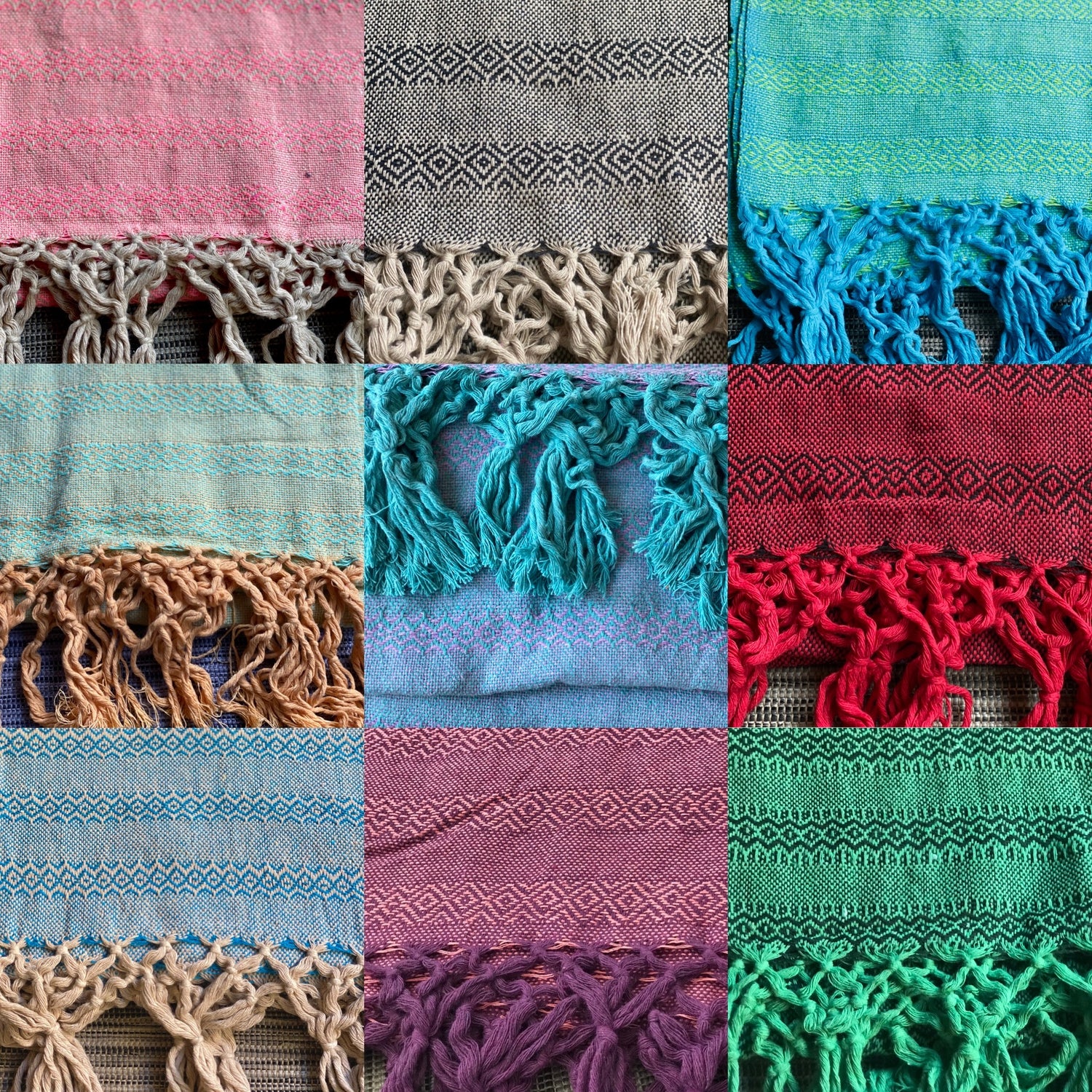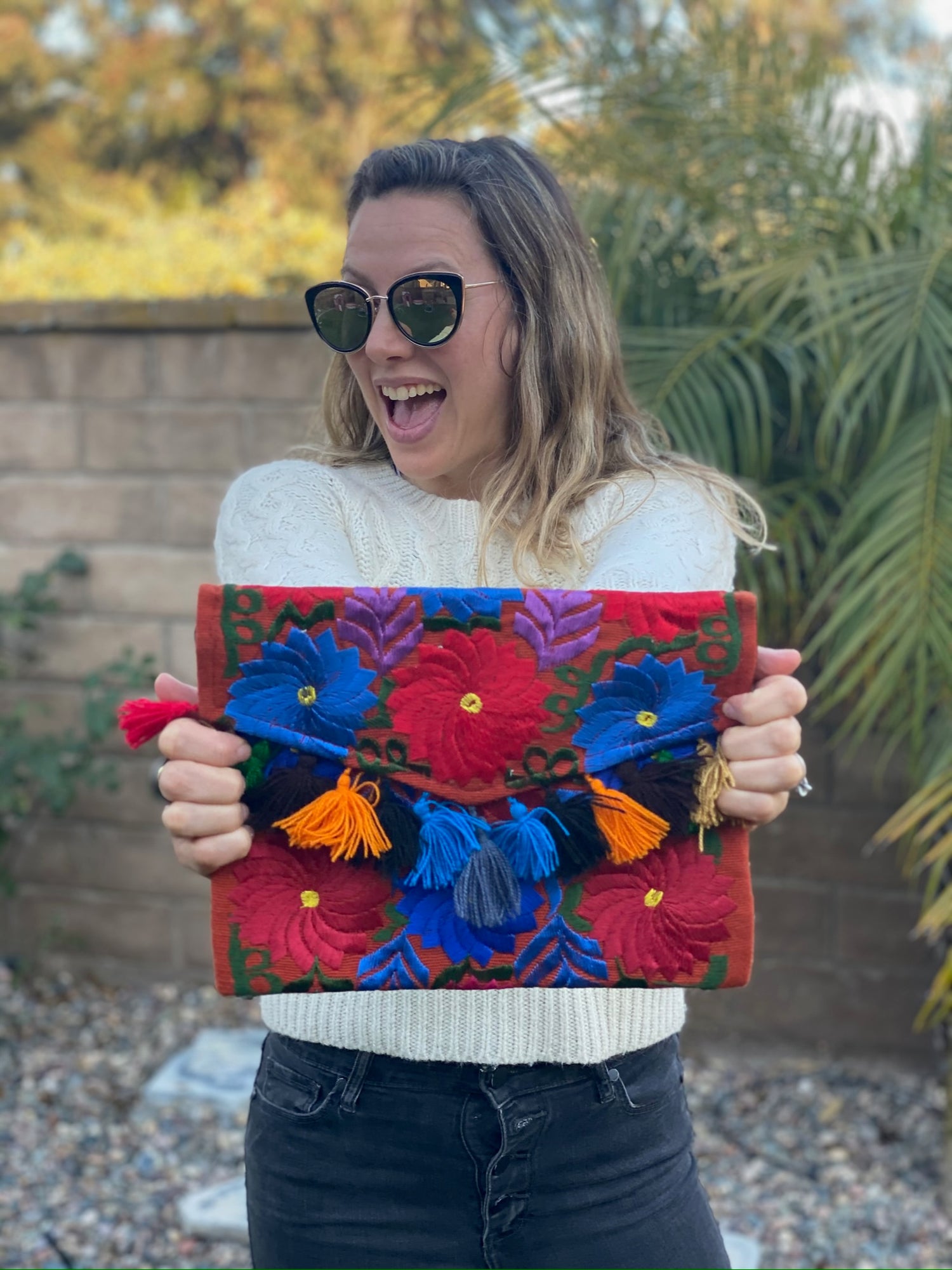The rebozo is not just a garment; it plays a vital role in the cultural fabric of Mexico.
Its significance stretches from historical roots to contemporary celebrations, making it an essential symbol of identity and tradition.
Understanding the rebozo gives you a deeper appreciation of its artistry and the stories woven into every thread.

From ancient times to the present, this versatile shawl has served multiple purposes, from providing comfort to expressing national pride.
During festivals and important events, wearing a rebozo connects you to a rich heritage, highlighting its importance in daily life and rituals.
As you explore the layers of meaning behind the rebozo, you will uncover its rich craftsmanship and the dedication required to create these beautiful pieces. The connection between tradition and personal expression is clear, making the rebozo a focal point of Mexican culture.
Key Takeaways
- The rebozo has deep historical roots that connect it to Mexico's past.
- Craftsmanship and artistry play a crucial role in rebozo creation.
- Wearing the rebozo expresses cultural pride and personal identity.
Historical Roots of the Rebozo

The rebozo has deep historical roots that reflect its evolution and significance in Mexican culture. Understanding its origins helps you appreciate how it became a symbol of identity and empowerment in various contexts.
Pre-Columbian Origins and Spanish Influences
The rebozo traces its roots back to Mesoamerican traditions. Indigenous women crafted early versions using local materials. These shawls were worn for practical purposes, such as protection from the sun and carrying goods.
When the Spanish arrived, they introduced new textiles, including silk. This blend of materials led to the rebozo's evolution. Spanish techniques influenced the weaving styles, creating more intricate designs. The use of bright colors and complex patterns became important features.
Over time, the rebozo not only maintained practical uses but also gained cultural importance as a marker of identity.
From Mestizo Culture to National Symbol
As Mexico's colonial history unfolded, the rebozo became a staple in mestizo culture. It represented a blend of Indigenous and Spanish influences, symbolizing unity in diversity.
Women wore the rebozo during key cultural events, solidifying its role in everyday life. It became associated with the huipil, a traditional garment worn by Indigenous women, enhancing its cultural heritage.
In the 19th century, the rebozo emerged as a national symbol. Artists like Frida Kahlo showcased it in their works, expressing Mexican identity. It began to embody themes of empowerment and resilience in a changing society.
The Rebozo in Revolutionary Identity
During the Mexican Revolution, the rebozo took on new importance. It symbolized women's participation in the struggle for justice and equality. Adelitas, or women soldiers, often wore the rebozo, making it a symbol of strength and courage.
These women played vital roles on the frontlines and in support positions. The rebozo became a unifying symbol for revolutionary ideals, representing hope and determination.
Its visual impact on art and propaganda further solidified the rebozo's role in the national narrative.
Influence of the Manila Galleon Trade
The Manila Galleon Trade, active from the 16th to the 19th centuries, greatly influenced the rebozo. This trade route connected Asia with Mexico, introducing silk and other goods into Mexican markets.
Silk rebozos became fashionable among affluent classes. The merging of Asian textiles with traditional Mexican patterns contributed to the rebozo's unique styles.
This trade not only shaped the fashion of the time but also reinforced the cultural exchange between different parts of the world. The rebozo emerged as a symbol of cultural fusion, reflecting Mexico's rich tapestry of influences.
Craftsmanship and Artistry

The rebozo showcases the exceptional craftsmanship and artistry of Mexican textile traditions. It reflects the skills of artisans, unique regional styles, and a connection to cultural practices. Understanding these elements enriches your appreciation of the garment.
Traditional Weaving Methods
The rebozo is traditionally made using various weaving methods, notably the backstrap loom and the pedal loom.
The backstrap loom is often used in indigenous communities where artisans can weave while seated, using their own body tension to craft the fabric. This method allows for intricate designs and precise control over the patterns.
Artisans often utilize the ikat technique, where threads are dyed before weaving. This creates stunning patterns and colors. Fiber sources such as cotton and wool are commonly used, enhancing both comfort and durability.
Each piece of rebozo is typically distinct, showcasing the individual skill of the weaver.
Artisan Communities and Regional Styles
Mexico is home to various artisan communities that contribute to the diverse styles of the rebozo. In Oaxaca, artisans often use bright colors and bold patterns, while those in Chiapas may favor more muted tones and traditional designs.
In Tenancingo, you will find a mix of both styles, with innovative touches that reflect contemporary design influences.
Each region adds its own cultural flavor, with designs often linked to local history and traditions. These unique characteristics give every rebozo its individual identity, making it a representation of the local heritage and craftsmanship.
Revival of Traditional Techniques
In recent years, there has been a revival of interest in traditional weaving techniques. Artisans are now blending these time-honored methods with contemporary designs, attracting a new audience.
Many designers are incorporating the rebozo into modern fashion while respecting its historical roots.
This revival helps to keep traditional practices alive and ensures that the skills of these artisans are passed down through generations. You can often see collaborative projects where modern designers work alongside traditional weavers, creating a fusion that celebrates both history and innovation.
The Rebozo in Museums and Collections
The rebozo holds a prominent place in museums and collections dedicated to Mexican culture. Institutions like the Fashion and Textile Museum showcase these textiles, highlighting their artistry and significance.
Exhibits often explore the cultural practices, rituals, and ceremonies associated with the rebozo, enriching your understanding of its role in daily life and special events.
Many museums include pieces that illustrate both historical and contemporary interpretations of the rebozo. Viewing these collections allows you to appreciate the skill and dedication involved, along with the artistic value of each piece.
These exhibitions play a vital role in educating the public about the deep-rooted traditions of rebozo craftsmanship.
Frequently Asked Questions

The rebozo is more than just a traditional shawl; it carries deep cultural significance in Mexico. This section addresses common questions about its symbolism, historical role, and contemporary uses.
What does the rebozo symbolize in Mexican culture?
The rebozo symbolizes love, strength, and identity. It is often seen as a representation of Mexican womanhood and is used in ceremonies, celebrations, and everyday life. The way it is worn or gifted conveys various messages about the wearer’s status, region, and social ties.
How has the rebozo played a role in historical Mexican events?
Throughout history, the rebozo has been present in many significant moments. Women have used it in protests, as a sign of resistance, and even as a tool during the Mexican Revolution.
Its role in these events highlights the strength and resilience of women in Mexican society.
In what ways is the rebozo used in traditional Mexican practices?
In traditional practices, the rebozo serves multiple functions. It is used to wrap and carry babies, offer comfort, and provide warmth. Additionally, it plays a role in various rituals and ceremonies, from weddings to funerals, symbolizing life’s many stages.
What are the variations and meanings of different rebozo styles across Mexico?
Different regions of Mexico produce unique rebozo styles, each with its own significance.
For example, rebozos from Michoacán are noted for their horizontal lines, while those from Oaxaca often feature intricate patterns. The style and colors reflect the culture and traditions of the area where they are made.
How has the function of the rebozo evolved from historical times to modern-day Mexico?
Initially, the rebozo was primarily a practical garment for women, used for warmth and utility. Over time, it has transformed into a fashion statement, while still retaining its traditional significance.
In modern-day Mexico, you can see it in both everyday wear and high fashion, blending practicality with style.
What significance does the rebozo hold in contemporary Mexican society and fashion?
Today, the rebozo is celebrated not just as a cultural artifact but as a fashionable item.
Many designers incorporate it into their collections, reviving traditional techniques.
It continues to inspire pride and connection to heritage among women while making a statement in modern fashion.




